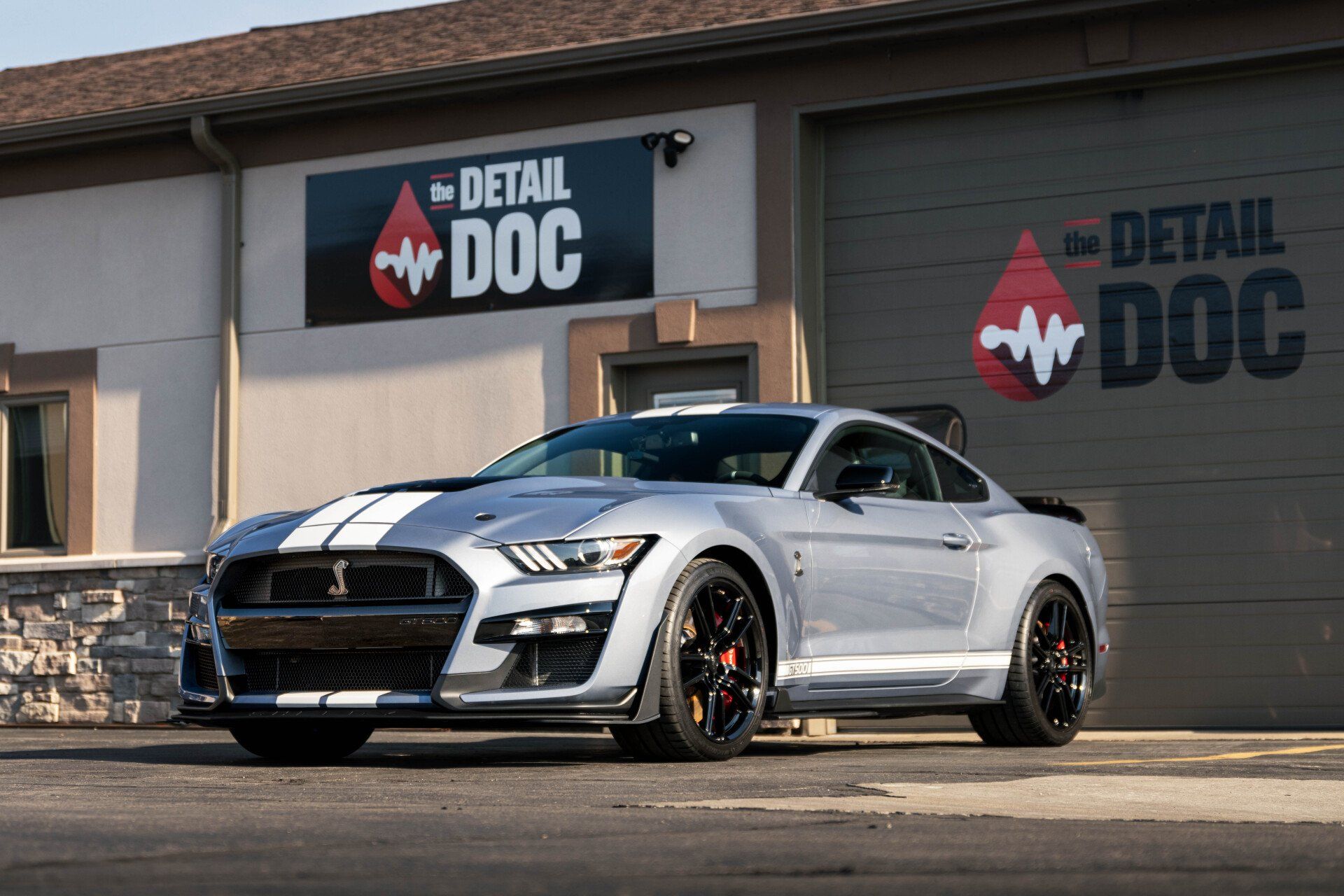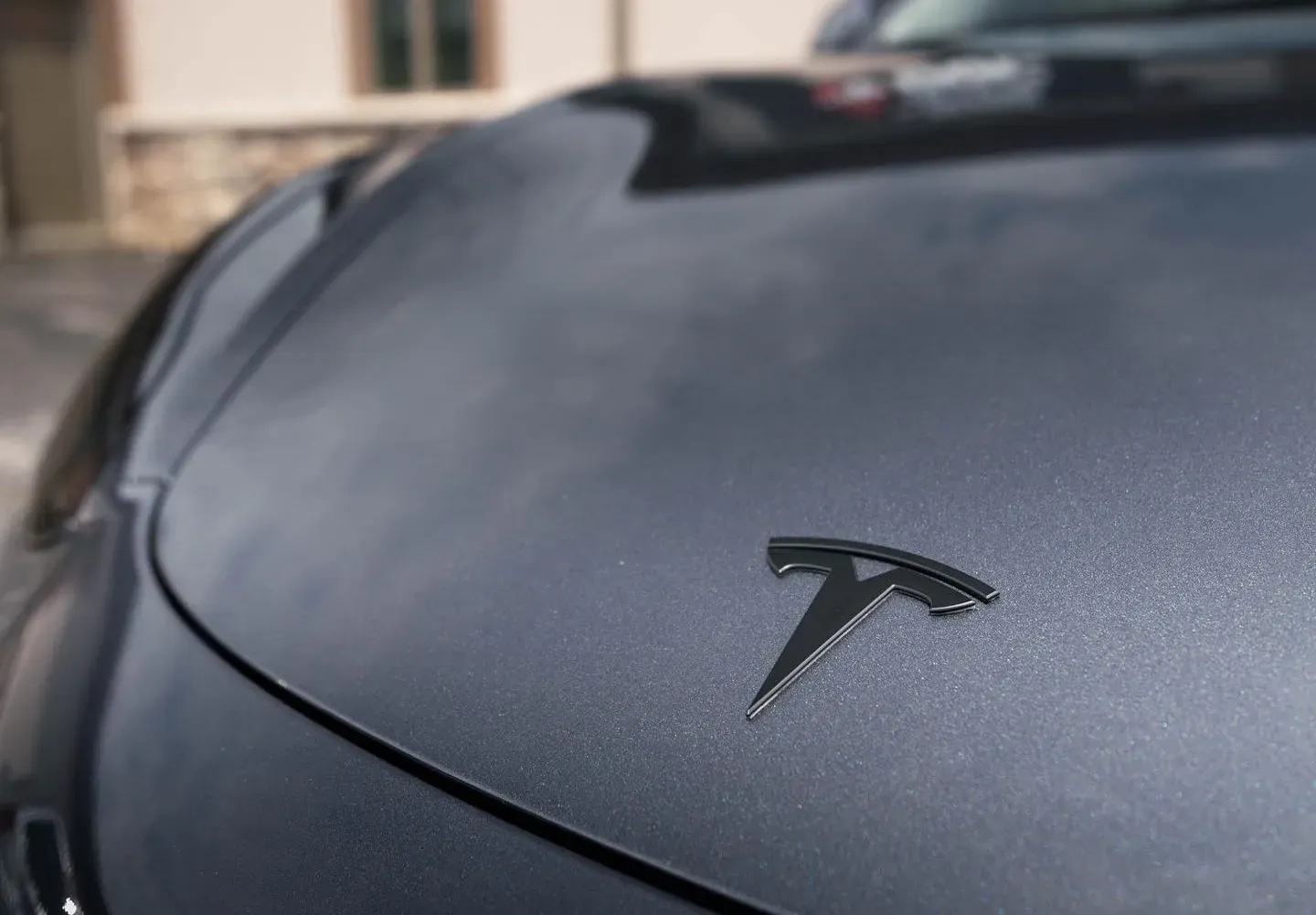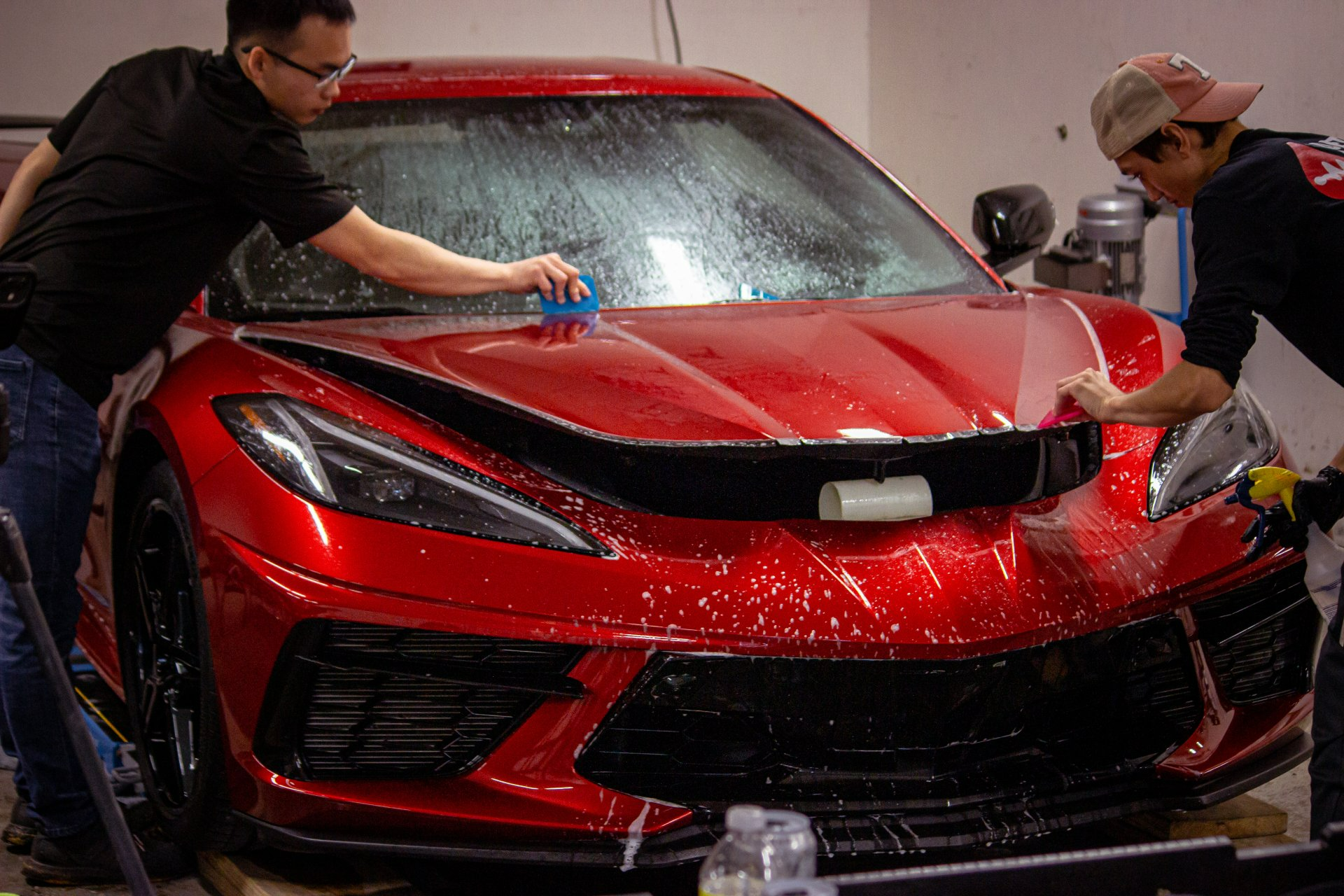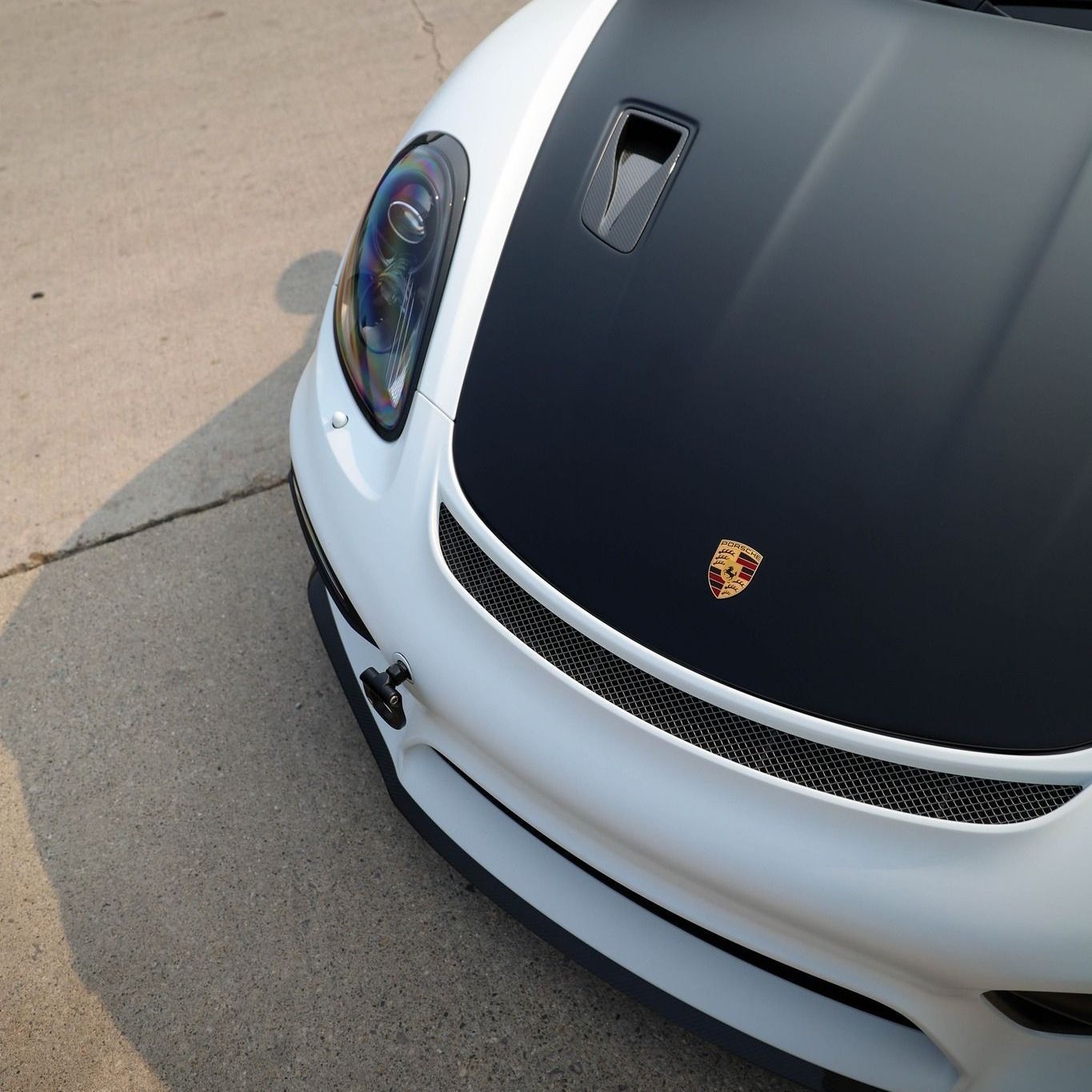The Detail Doc Blog
How to Apply Ceramic Coating on Your Car: Step-by-Step Guide
(989) 244-0505 GET SCHEDULED NOWCeramic coating, once applied correctly, creates an armor that shelters your car's paint from harsh elements. It defends against damaging UV rays and stains while enhancing the glossy finish and reducing cleaning times. Yet, getting it right isn't as simple as slathering on a layer. The secret sauce lies in the meticulous preparation of your car’s surface - an overlooked aspect but one with huge implications for the final result. Now let's get down to achieving a shiny new look for your car.
Purpose of Applying Ceramic Coating
The ceramic coating serves as a safeguard for your car's paint, shielding it from various harmful elements like UV rays and chemical stains.
UV rays from the sun can cause your car's paint to fade over time, giving it a dull, lackluster appearance. The ceramic coating acts as a hero; it acts as a barrier against these harmful UV rays, preserving the color and finish of your car’s paint job. It also works its magic when it comes to chemical stains, preventing substances like bird droppings, tree sap, or other environmental contaminants from etching into the clear coat of your car's paint.
Furthermore, the hydrophobic nature of the ceramic coating causes water and dirt to slide off the surface effortlessly, making maintenance easier. This means you won't need to wax or polish your car as frequently as before. The enhanced shine provides your car with a glossy showroom-like appearance that lasts longer than traditional waxing or polishing.
Beyond aesthetics, it's crucial to highlight that ceramic coating plays a significant role in maintaining the resale value of your vehicle. By preserving the exterior condition of your car, ceramic coating can increase its attractiveness to potential buyers when the time comes to sell or trade in.
For those seeking professional-grade application and expertise in ceramic coating services, our website offers top-tier solutions that guarantee flawless results. Our team specializes in the meticulous application of ceramic coatings to ensure optimal protection and aesthetic enhancement for your vehicle.
With a solid understanding of the purpose and benefits of ceramic coatings, let’s now move on to preparing your car's surface for the application process.
Preparing Your Car's Surface
Before applying a ceramic coating, it's crucial to ensure that your car's surface is perfectly clean and free of contaminants. The smoother the surface, the better the ceramic coating will bond, resulting in a more durable and effective finish.
Wash and Dry Thoroughly
Begin with a thorough wash to eliminate any dirt, grime, and residue from the surface of your car. Use a pH-balanced car shampoo and a microfiber wash mitt to minimize the risk of introducing scratches to the paintwork. Rinse off the soap thoroughly, ensuring that no residue remains.
After washing, it's vital to dry the car completely. Water spots or remaining moisture can interfere with the bonding process of the ceramic coating. Use a clean microfiber drying towel to gently pat dry the entire surface, including all nooks and crevices.
Thoroughly drying your car is crucial for the success of your ceramic coating application, as any residual water droplets can potentially cause streaks or uneven coverage.
Removing Contaminants and Claying
You might think your car looks clean, but there are tiny impurities hiding just beneath the surface that can interfere with the ceramic coating application. This step is all about uncovering these contaminants and making sure your car's exterior is ready for the incredible transformation that comes with a ceramic coating.
Inspecting for Imperfections
Before diving into the decontamination process, inspect the entire surface of your car carefully. Look out for imperfections such as embedded dirt, road tar, tree sap, and other stubborn substances that regular washing won't remove. A thorough inspection ensures that you don't miss any hidden contaminants that may affect the finish of your ceramic coat.
When inspecting your car's surface, pay special attention to the areas around the lower panels, wheel arches, and behind door handles—these spots often harbor a surprising amount of grime.
The Decontamination Process
The clay bar works best when used with a slick lubricant to ensure that it glides effortlessly across your car's surface without scratching. Apply the lubricant liberally before gently moving the clay bar in straight lines, always ensuring full coverage across every panel of your car. You'll feel the resistance as the clay bar picks up embedded contaminants from the paintwork. Keep kneading and folding the clay bar as you work to expose a fresh surface and maintain its effectiveness.
It's like using a lint roller on your favorite black sweater—the clay bar sticks to and removes any contaminants, much like how a lint roller removes stray hairs or lint.
By properly inspecting for imperfections and meticulously conducting the decontamination process, you're paving the way for an impeccably clean canvas that ensures optimal adhesion of the ceramic coating.

Implementing Ceramic Coating
Applying a ceramic coating to your car calls for a steady hand and a meticulous plan. Instead of simply diving in, consider dividing your vehicle into manageable sections for a thorough and effective application.
Divide your car into sections, such as the hood, roof, doors, and trunk. By working in smaller areas, you can be more precise and ensure complete coverage without rushing or missing any spots. This also helps prevent the ceramic coating from drying before you're finished applying it, which could lead to uneven coverage and an unsightly finish.
Remember, even coverage is key here. You want to make sure every inch of your car's surface gets protected by the ceramic coating for maximum benefit.
After dividing the car into sections, pay attention to the application technique. When applying the ceramic coating, use cross-hatch or crisscross patterns instead of simple strokes. This technique ensures that the coating is spread evenly across the surface, leaving no area untouched.
By using cross-hatch or crisscross patterns, you're guaranteeing an even distribution of the ceramic coating over every contour and curve of your vehicle. This method avoids missing any spots and provides a uniform layer of protection for a seamless finish.
Follow the specific product's instructions carefully when applying the ceramic coating. Every product has its own unique characteristics, and following its prescribed techniques will ensure that you achieve the best results. Adhering strictly to curing times and removing any excess coating through buffing are crucial steps that contribute to the successful application of ceramic coating.
Curing times refer to the duration during which the coating needs to bond with the surface before buffing off any excess material. This allows the coating to settle and adhere properly, ensuring long-lasting protection for your car. The buffing process smooths out any uneven spots and ensures a pristine finish.
Correcting Surface Blemishes
Before applying ceramic coating, it's important to address any imperfections on your car's surface. Minor imperfections and swirl marks can disrupt the flawless finish that ceramic coatings create. Therefore, a gentle polish is essential to ensure a smooth and blemish-free surface for the ceramic coating to adhere to.
Polishing is like giving your car's paint job a luxurious spa treatment. It involves using specialized compounds and polishes to gently remove imperfections, small scratches, and swirl marks from the clear coat without causing any harm. By doing this, you're not just creating a better surface for the ceramic coating to bond with but also enhancing the overall appearance of your car.
Imagine polishing your car's surface as smoothing out wrinkles in fabric before sewing a beautifully intricate design. It's about ensuring that the canvas—in this case, your car's exterior—is as perfect and blemish-free as possible so that when the ceramic coating is applied, it creates an impeccable finish.
Addressing Chips and Scratches
While a gentle polish can work wonders for minor imperfections, deeper chips and scratches require more attention. Before applying ceramic coating, it's crucial to address these deeper blemishes.
Consider addressing chips and scratches as giving first aid to your car's skin. Outlines of touch-up paint can help mask small chips and scratches; however, for more severe imperfections or widespread damage, seeking professional paint correction services ensures that your car's paintwork is brought back to its original state.
Bear in mind that applying ceramic coating to unrepaired chips and scratches can actually accentuate these imperfections rather than conceal them. It's like trying to hide a stain on fabric without first cleaning it; the end result won't be as pristine as you'd like it to be.
By thoroughly correcting surface blemishes before applying ceramic coating, you set the stage for a breathtaking finish that not only looks flawless but also provides long-lasting protection for your car's exterior.
Achieving a Glossy Finish
So, your car's surface imperfections have been addressed, and now it's time to move on to the next step towards achieving that stunning glossy finish. Applying a ceramic coating isn't just about protection; it's also about enhancing the visual appeal of your vehicle. However, obtaining that glossy finish isn't the end of the road; it's actually just the beginning of your commitment to maintaining it.
Following the application of the ceramic coating, there is a significant curing period. It's crucial to allow the ceramic coating to cure as per the manufacturer's instructions. This duration typically ranges from 24 to 48 hours. During this period, it's important to shield the car from any moisture or environmental contaminants.
The curing period might seem lengthy, but it's absolutely essential for the ceramic coating to bond with the paintwork, forming a strong protective layer. Without this bonding time, the coating will not be able to perform at its best and may not provide the desired gloss or durability.
To understand this better, think of it like laying a foundation for a building. You need that solid base before you can build anything on top of it. In the same way, allowing the ceramic coating to cure properly creates a strong foundation for the glossy finish you're aiming for.
After the curing period, maintaining the glossy finish should be your priority. Post-coating maintenance is just as critical as the application process itself. This means using pH-balanced shampoos during regular washing and avoiding abrasive cleaning methods that could harm the ceramic coating.
If all this seems like too much to handle on your own, professional ceramic coating services are available at The Detail Doc. Our experts ensure that your car maintains its glossy finish through lasting protection and optimal care. The journey doesn't end after achieving that perfect glossy finish; it continues with consistent maintenance and care to retain and enhance the visual allure of your vehicle. Contact us.





